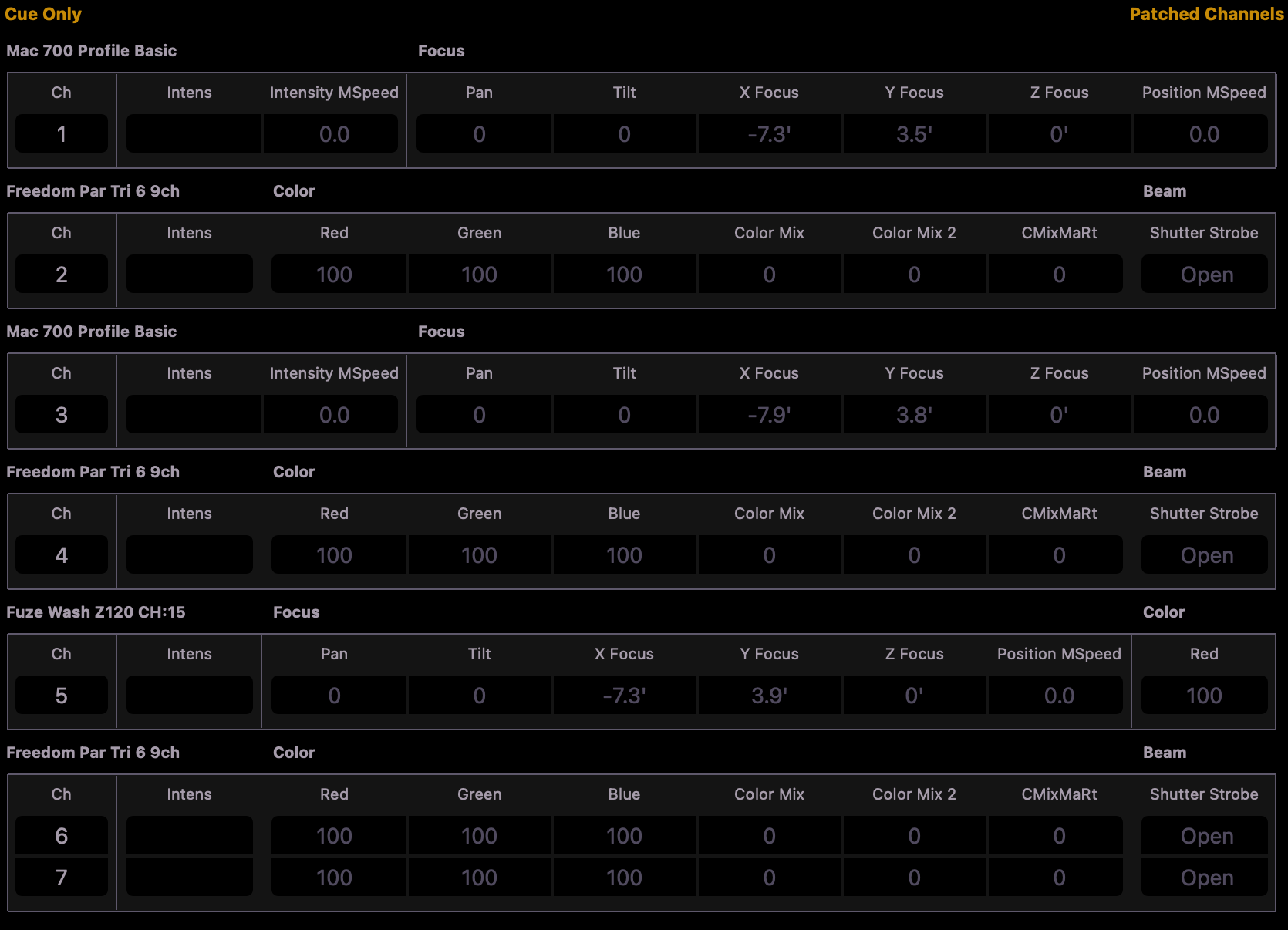Channel Parameters
In EOS, intelligent fixtures are controlled largely in the same way as conventional fixtures. We see them as channels, provide values, and record them into cues. In fact, using the provided worksheet, you’ll see the same 9 channels as before; except that they’ll look slightly larger / taller.

This extra space is showing extra values, or what we call “parameters” about the lights. It doesn’t seem like much here; but if we change the way in which the information is being displayed by pressing the [Format] button (found at the far right hand side of the keyboard), we’ll see all the different parameters a channel can use as well as their corresponding values.
You’ll also notice a new color, Dark Gray, which is the color a value has when it has returned “home”, meaning it’s not being told to do anything. It’s probably easiest to think about this concept with a moving light – it has to a point somewhere, so “home” would be like saying … “When you’re not told to do anything, just point straight down; not forward, not backward, just straight down”.
You’ll also notice in this format that the channels are grouped together by number and by type. The white text above each chunk of channels tells you the make and model each light.

As you look through all the lights in this format, hopefully you’ll notice parameters that seem to make sense and fairly clear. For example, Intensity is a parameter for all of these fixtures. Other parameters, such as CMixMatRt might not make much sense; we’ll talk about how to figure out what that means later – for now just nod your head, give a thumbs up, and act like someone is telling a story and you know exactly what’s going on.
New parameters that you might recognize could be Pan and Tilt; this signifies that the light can change the direction in which it’s facing, meaning it’s what we would call a “moving light”. You’ve probably seen these before, we’ll talk about that more in a different lesson. Or perhaps Red, Green, and Blue. Those are colors! Primary colors to be exact. Not your kindergarten primary colors, these are the primary colors of light; which works using additive color mixing – rather than subtractive color mixing (read this article to learn more about additive color mixing). When the RGB values are zero / out, we get black, the absence of light. When the RGB values are 100 / full, we get white, the presence of all colors of light. When they’re a variation of values in between we get color mixing; pretty much any color we want.
What else? Well, depending on the light, you can adjust strobe and gobos and shutters and diffusion and zoom and edge and haze and snow and rotation and and and and … AH! Parameters parameters parameters. So many parameters! It can be really overwhelming, but EOS will organize everything into 6 different sections …
- Intensity
- Focus
- Color
- Form
- Image
- Shutter
Organization makes things a little easier. We’ll step through these in the next few lessons.

